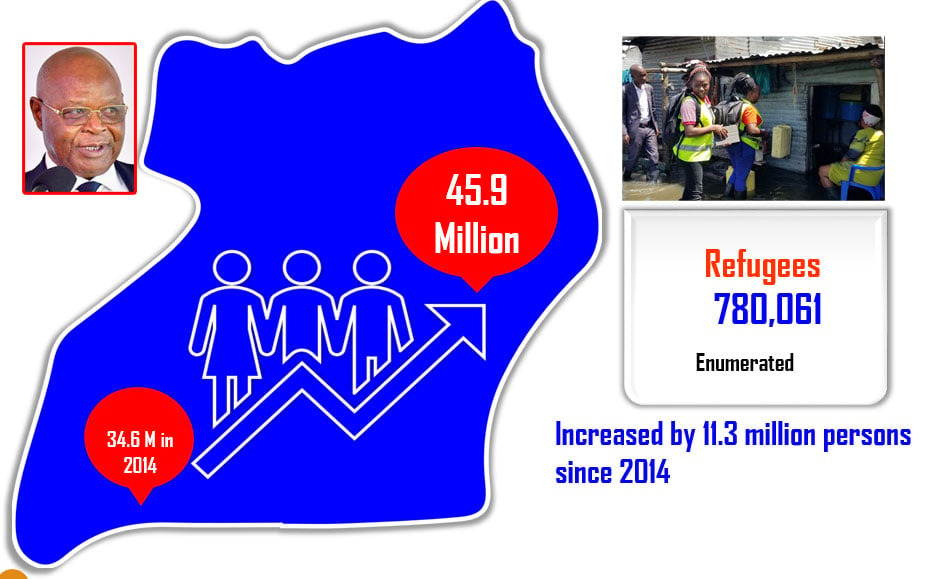2024 Census: Northern districts register population surge

Enumerators conduct the census recently. Photo | File
What you need to know:
Wakiso District in Central Buganda remains the most populous with 3.3 million people, followed by Kampala with 1.8 million, with Yumbe at 972,351 emerging in third place, outpacing traditionally high-population districts of Mukono (932,672) and Kasese (847,027)
Some districts in Northern Uganda, particularly in West Nile, have registered significant increases in population in the just released preliminary results for the 2024 National Population and Household Census.
Districts previously known for having smaller populations because they are hard to reach have shown a remarkable upswing in numbers.
Wakiso District in Central Buganda remains the most populous with 3.3 million people, followed by Kampala with 1.8 million, with Yumbe at 972,351 emerging in third place, outpacing traditionally high-population districts of Mukono (932,672) and Kasese (847,027).
Previously, Yumbe District had 484,822 people, indicating an increase of 487,529, which is a 101 percent increase.
Obongi also saw a significant rise, with a 223 percent increment in its population from 43,061 people recorded in 2014 to 143,492 people in 2024, an increase of 100,431 people.
Other hard-to-reach districts that experienced a spike in their populations include Terego (322,893), Amudat (203,412), and Otuke (163,100).
The spike in population in these districts is attributed to the influx of refugees, particularly in West Nile.
Dr Chris Mukiza, the executive director of the Uganda Bureau of Statistics (Ubos), yesterday said out of the counted 45.9 million Ugandans, 780,000 were refugees who spent the night of May 9 in the country.
Justification
In a separate phone interview, Dr Vincent Senono, the Ubos head of demographic and social statistics, said all districts that are hosting refugees recorded a spike in the number of people.
He said the number of people declaring themselves refugees reduced this year after some of them said they were Ugandans.
Other districts previously known for having a large number of people include Isingiro (633844), Luweero (614,230), Tororo (609,117), Mayuge (562,048) and Ntungamo (553,197).
Day population in the city
The results showed that the country has a daytime population of 1.3 million persons.
The highest daytime population was recorded in Kampala City with 627,340 persons, followed by Mbarara City with 91,165 persons, while Hoima has the least daytime population among the cities and towns.
Ubos defines the daytime population as the number of people in an area, typically a city, during normal business hours. Dr Mukiza said Ubos captured information on household members who visited any city in the last 14 days of the census week.
The majority of the persons (380,167) who moved to the cities reported work as the most common reason. Other common reasons included business with 156,111 persons and shopping with 130,473 persons.
Dr Senono said the number of people in Wakiso and Mukono increased because some of them work in Kampala and go back to their homes in the evening.
The counting of people in the country started on May 10 and ended on May 26. The provisional census results are to be released on September 24, with the final report planned for December 24.
The preliminary results show Uganda has a population of 45, 935, 046 people, from 34.6 million counted in 2014, representing an increase by 11.3 million in the last 10 years. This includes 780,061 refugees.




